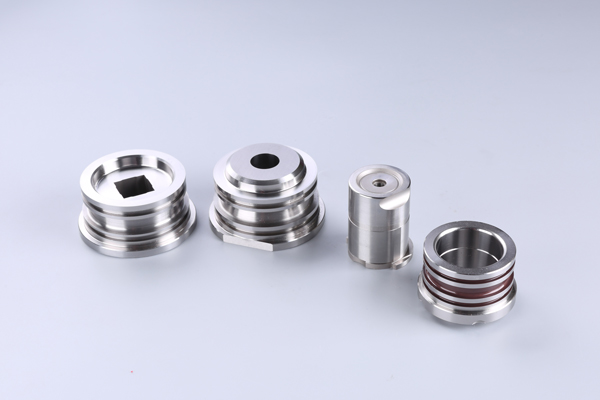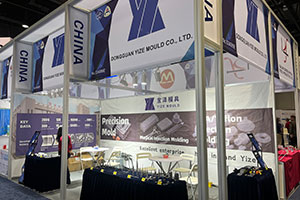Accurately Gauging the Service Life of Tungsten Carbide Dies
In the grand landscape of die manufacturing, tungsten carbide dies shine like a bright star. With their high hardness, high strength, excellent wear resistance, and corrosion resistance, they firmly occupy […]
In the grand landscape of die manufacturing, tungsten carbide dies shine like a bright star. With their high hardness, high strength, excellent wear resistance, and corrosion resistance, they firmly occupy a pivotal position. They serve as the crucial “behind-the-scenes heroes” in numerous production processes, safeguarding the high-quality forming of products. However, as time goes by, the performance of tungsten carbide dies will gradually decline, just like a train slowly descending a slope, until they can no longer meet the stringent production requirements and eventually need to be replaced.
Accurately assessing the service life of tungsten carbide dies is by no means a trivial matter. It is a critical task related to product quality, production efficiency, and production costs. Precise life assessment enables us to plan the die replacement time in advance, preventing production interruptions caused by sudden die failures and ensuring the stable output of product quality. It also allows for reasonable production planning, improving production efficiency and avoiding unnecessary resource waste, thereby effectively reducing production costs. This article will conduct an in-depth analysis from multiple dimensions on how to assess the service life of tungsten carbide dies, presenting die users with a highly valuable reference guide.
Our factory business: carbide parts, mold parts, medical injection molds, precision injection molds, teflon PFA injection molding, PFA tube fittings. email: [email protected],whatsapp:+8613302615729.
1. Unveiling the Fundamental Properties of Dies
When embarking on the journey of assessing the service life of tungsten carbide dies, understanding their basic properties is the first and foremost task, akin to understanding a person’s physical fitness as the foundation for all subsequent assessments. The hardness of the die determines its ability to resist indentation by external forces; toughness is related to its capacity to avoid brittle fracture under stress; wear resistance affects its loss during frequent friction with materials; impact resistance reflects its ability to withstand sudden impact loads; corrosion resistance determines its survival ability in harsh chemical environments; and thermal stability influences its performance in high-temperature or rapidly changing temperature environments. These property indicators are intertwined and collectively determine the maximum stress, friction, wear, and temperature changes that the die can withstand during use. Only by fully grasping these property data can we more accurately predict the service life of the die.
2. Analyzing the Usage Environment “Enigma”
The usage environment of dies is like an invisible “battlefield” that has a profound impact on their service life. The temperature during production, whether too high or too low, can alter the properties of the die and accelerate its aging process; excessive pressure can cause the die to deform or even rupture; high humidity can trigger corrosion of the die; different friction coefficients directly affect the wear rate of the die; and corrosive media are the “invisible killers” of dies, silently eroding their surfaces and reducing their performance. Therefore, when assessing the service life of tungsten carbide dies, it is essential to conduct a comprehensive and detailed analysis of the usage environment, understand the impact degree of each factor on the die’s properties, and then more precisely predict its service life.

3. Considering the Burden of Usage Frequency and Load
The usage frequency and load of dies are like two “heavy burdens” placed on the shoulders of the dies, having a significant impact on their service life. A high usage frequency means that the die, like a non-stop machine, is subject to more severe friction and wear with each stamping and forming operation, gradually consuming its “vitality”; a large load implies that the die bears greater stress, similar to a person carrying a heavy backpack, which can easily lead to deformation or damage over time. Therefore, when assessing the service life of tungsten carbide dies, these two factors must be fully considered, and the service life of the die should be reasonably predicted based on actual usage conditions.
4. Detecting the “Signals” of Wear Conditions
The wear condition of dies is an important “signal light” for assessing their service life. By carefully observing the degree of wear, wear patterns, and wear rate on the die surface, we can initially judge its service life. A severely worn die will have obvious pits, scratches, or cracks on its surface, like a face etched with the marks of time. These “scars” not only affect the precision of the die but also lead to a decline in its performance, resulting in quality issues with the produced products. Therefore, regularly observing the wear condition of the die and taking corresponding maintenance measures in a timely manner based on the degree of wear, such as repairing worn parts and adjusting usage parameters, can effectively extend the service life of the die.
5. Watching Out for the “Hidden Dangers” of Deformation and Cracks
In addition to wear, deformation and cracks in dies are like “time bombs” hidden in the dark, posing a serious threat to their service life. Deformation and cracks can cause a decline in the dimensional accuracy and shape accuracy of the die, just as a once-precise die becomes “out of shape” due to deformation or cracks, making it impossible for the produced products to meet quality requirements and thus affecting production efficiency. Therefore, regular deformation and crack detection of dies are crucial. We can use measuring tools to accurately measure the key dimensions of the die to check for deformation; at the same time, use magnifying glasses or microscopes to carefully observe the die surface to detect any potential cracks. Once deformation or cracks are found in the die, it should be repaired or replaced in a timely manner to prevent the problem from worsening and affecting production.
6. Examining the “Effectiveness” of Maintenance and Management
The level of maintenance and management of dies is like a “protective shield” for them, having an important impact on their service life. Good maintenance and management can act as a “stimulant” for the die, delaying the processes of wear, deformation, and corrosion and extending its service life. This includes cleaning the die to keep its surface clean and free from impurities that could cause damage; lubricating key parts of the die with appropriate lubricants to reduce friction and wear; tightening to ensure that all components of the die are firmly connected and avoid problems caused by loosening; and regular inspection to detect and deal with potential problems in a timely manner, preventing them from escalating. Regularly conducting comprehensive and detailed maintenance and management of the die, like giving the die a “physical examination,” can ensure its stable operation and efficient production.
7. Drawing up a Comprehensive Assessment and Prediction “Blueprint”
After fully understanding factors such as the basic properties, usage environment, usage frequency and load, wear condition, deformation and cracks, and maintenance and management level of the die, we can draw a comprehensive assessment and prediction “blueprint” for the service life of the tungsten carbide die. This requires a comprehensive analysis and judgment of the above factors based on actual conditions, just like assembling a puzzle to form a complete picture. We can use statistical methods, mathematical models, or empirical formulas to quantitatively predict the service life of the die, providing a scientific basis for die use and management. At the same time, verify and adjust the prediction results in combination with actual production conditions to ensure the accuracy and reliability of the prediction results, just like constantly correcting the course during navigation to ensure the ship reaches its destination accurately.
8. Conclusion and Prospects for a “New Journey”
Assessing the service life of tungsten carbide dies is a complex yet highly significant task. Through a comprehensive assessment and prediction of factors such as the basic properties, usage environment, usage frequency and load, wear condition, deformation and cracks, and maintenance and management level of the die, we can more accurately grasp the life status of the die and provide strong support for production decision-making. During the assessment process, it is necessary to fully consider the interactions and influences among various factors, just like playing a symphony where each note cooperates with others to create a beautiful melody.
To extend the service life of tungsten carbide dies, we should strengthen die maintenance and management, improve the quality of die cleaning, lubrication, and tightening work, like carefully nurturing a seedling to make it grow strong; at the same time, strengthen regular inspection and repair work of dies, detect and deal with potential problems in a timely manner to prevent problems from accumulating and causing serious consequences. Through the implementation of these measures, we can effectively extend the service life of tungsten carbide dies, improve production efficiency and product quality, and embark on a new journey in die manufacturing and use.






